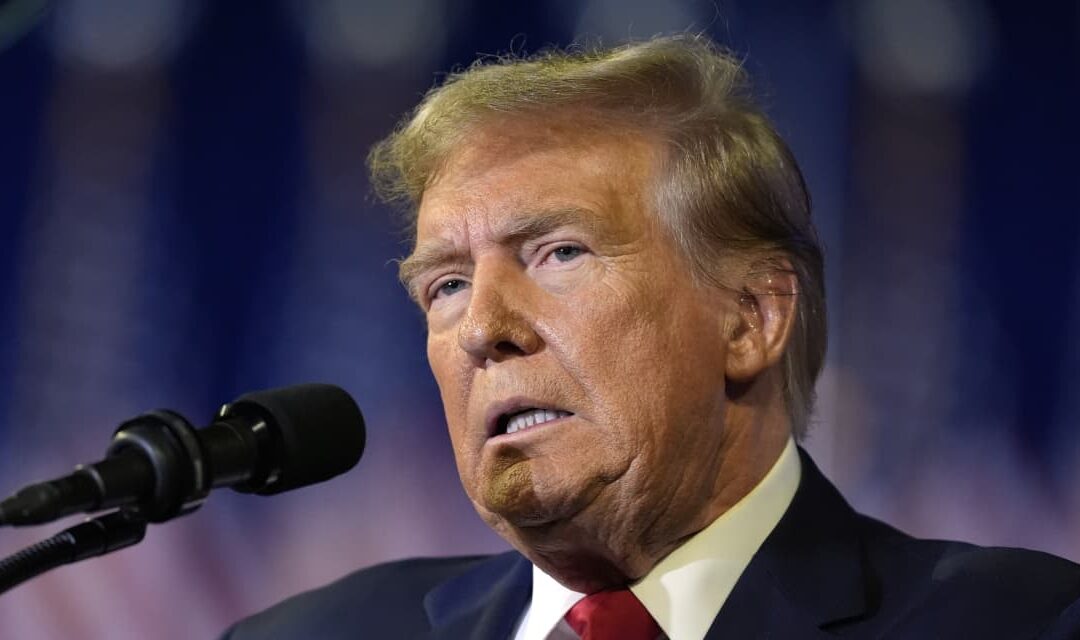Whether you know it or not, if you have a 401(k) or other retirement account there’s a good chance a chunk of your savings is tied up in Europe. That’s because European stock markets, from Portugal to Poland, make up about two-thirds of the main international stock index, known as EAFE. U.S. savers have nearly $4.5 trillion invested in international and global stock funds.
Should you be worried about that money? After all, the security of Europe is underpinned by the NATO alliance — which, since 1949, has been underpinned by the United States.
Donald Trump has apparently just threatened the structure of that entire alliance should he be elected president. And political betting now makes Trump the (slight) favorite to win the November election.
Based on the headlines over the past few days, any investor would have reason to worry. “Trump’s incendiary NATO remarks send very real shudders through Europe,” CNN reported. He will “pull U.S. out of NATO” if re-elected, it added, citing John Bolton, who served as national security advisor under Trump. The head of NATO said Trump had put the entire alliance, and Western Europe, at risk.
In case you missed it, Trump said that if he were president, he wouldn’t send U.S. troops to help defend any NATO country from attack if that country wasn’t paying its share of NATO costs, defined as allocating 2% of gross domestic product for defense. He also said he would “encourage” aggressor countries, like Russia, to “do whatever the hell they want” to such “delinquent” countries.
The first thing to point out is that stock-market investors in Europe, who are betting real money, do not seem to share the panic of headline writers or the foreign-policy establishment. The MSCI Europe index, which tracks the stock markets of developed countries in Europe, mostly Western Europe, edged up one-tenth of a percentage point Monday. The index for emerging stock markets in Eastern Europe, such as Poland and Hungary, was down 0.03% — effectively unchanged. The index that tracks the Baltic states, particularly the stock markets of Lithuania and Estonia, reacted the same way.
There are three rational reasons for this.
The first is that it’s Trump. You’d think, after eight years, the media would have learned the basic lesson of its 2016 debacle: Take Trump seriously, but not literally. Investors can reasonably guess that Trump’s remarks are largely rhetorical — they are intended both for campaign purposes and to shame NATO allies into picking up more of the tab.
Alliance members not paying enough is a genuine issue. At the moment, only 11 of the 31 member countries are spending the mandatory 2% of GDP on defense. The other 20 are skimping on their obligations.
If Trump were re-elected president and Vladimir Putin invaded Central Europe, would the U.S. actually intervene, even if a country hadn’t paid its full NATO tab? Investors are guessing the answer would be yes. Trump, after all, probably doesn’t want to see an international financial collapse while he’s in the White House. And he generally ended up doing the easy thing during his first term, anyway.
There’s another aspect to this, although it’s not getting much attention right now. The countries that are currently “delinquent” — Trump’s term — on their NATO contributions aren’t the frontline countries most at risk from Russia.
Poland spends nearly 4% of its GDP on defense, a higher percentage than the U.S. The Baltic states — Lithuania, Latvia and Estonia — all spend well over the 2% threshold. So do Romania, Slovakia and Hungary.
The countries currently spending less than 1.5% of GDP on their military budgets include Italy, Spain, Portugal, Belgium and Luxembourg. The chances of Putin’s tanks rolling into any of those countries is relatively small.
Germany is also under the 2% mark, spending 1.57% of GDP on defense. It has a NATO shield in Poland. But investors are probably gambling that, even if Trump were serious, there is no good reason the Germans can’t spend 2% of their GDP on defense, and they probably would.
For investors in international — and especially European — stocks, these are fundamental issues. They are about whether European stock markets face any genuine risk from a potential Russian attack.
Those issues are different from headline risks: Those are the risks that headlines will cause some people to panic and sell stocks, driving down prices, which in turn will cause other people to panic and sell, driving down prices still further. Those risks are real, but they are generally short-term risks. For example, the Polish stock-market index, as measured by MSCI, collapsed when Putin invaded Ukraine in 2022, falling by a third over a couple of weeks and by more than half during the course of the year, but it has since recovered all its lost ground. The story has been much the same for the Hungarian market.
Incidentally, the Polish stock market is directly investible for U.S. investors through an exchange-traded fund, iShares MSCI Poland
EPOL.
Meanwhile, if you are getting nervous and are tempted to cash out “risky” international stocks and buy “safe” U.S. ones, remember that one of the biggest determinants of your long-term stock-market returns is valuations. According to SG Securities, U.S. stocks right now are far more expensive than international stocks. The broad U.S. market sells for 21 times forecast per-share earnings for 2024, SG estimates. The rest of the world? Just 13 times per-share earnings. Europe, too, trades for 13 times per-share earnings.
Bottom line: If there is a panicky selloff of international stocks driven by Donald Trump or by headlines, I’ll be buying.









